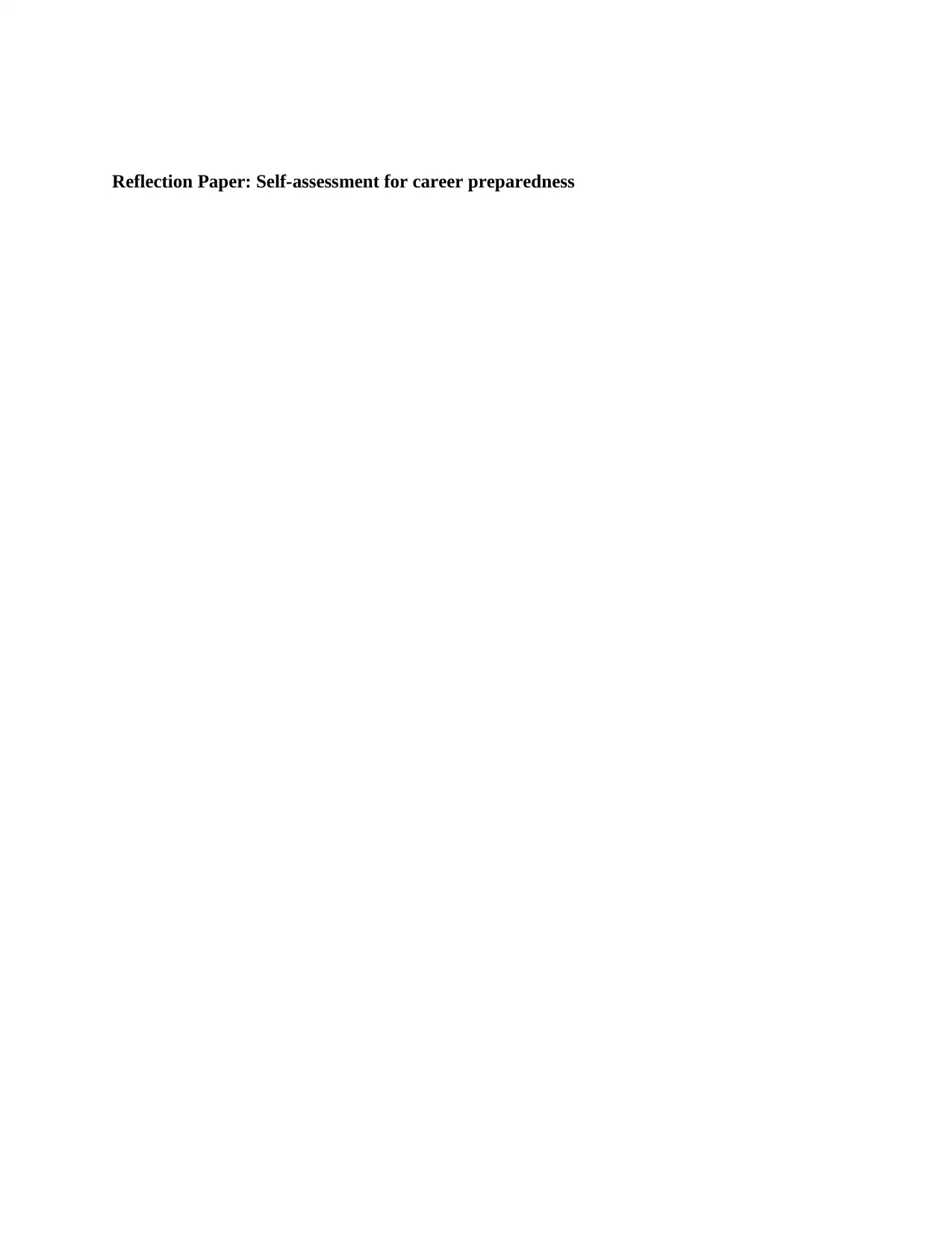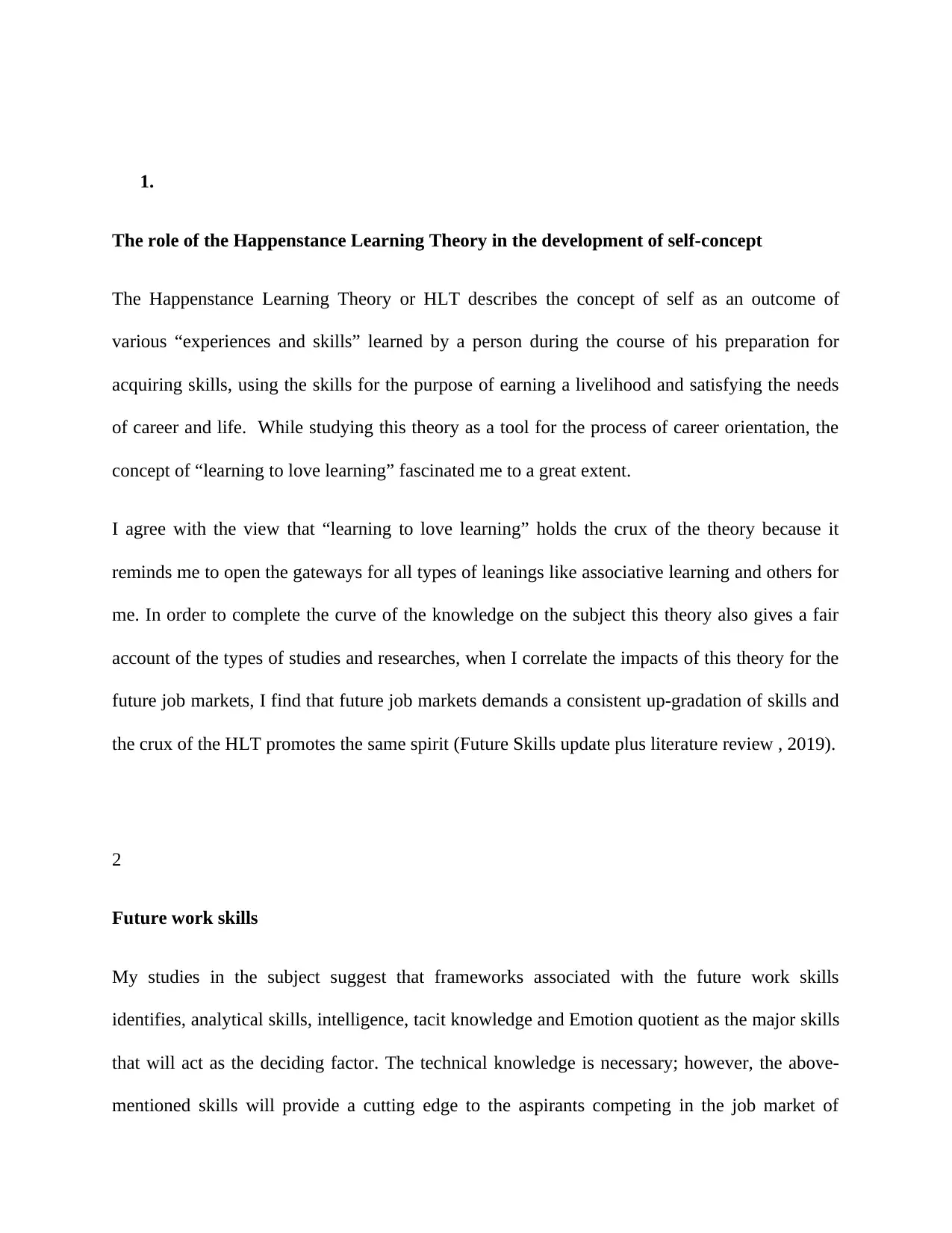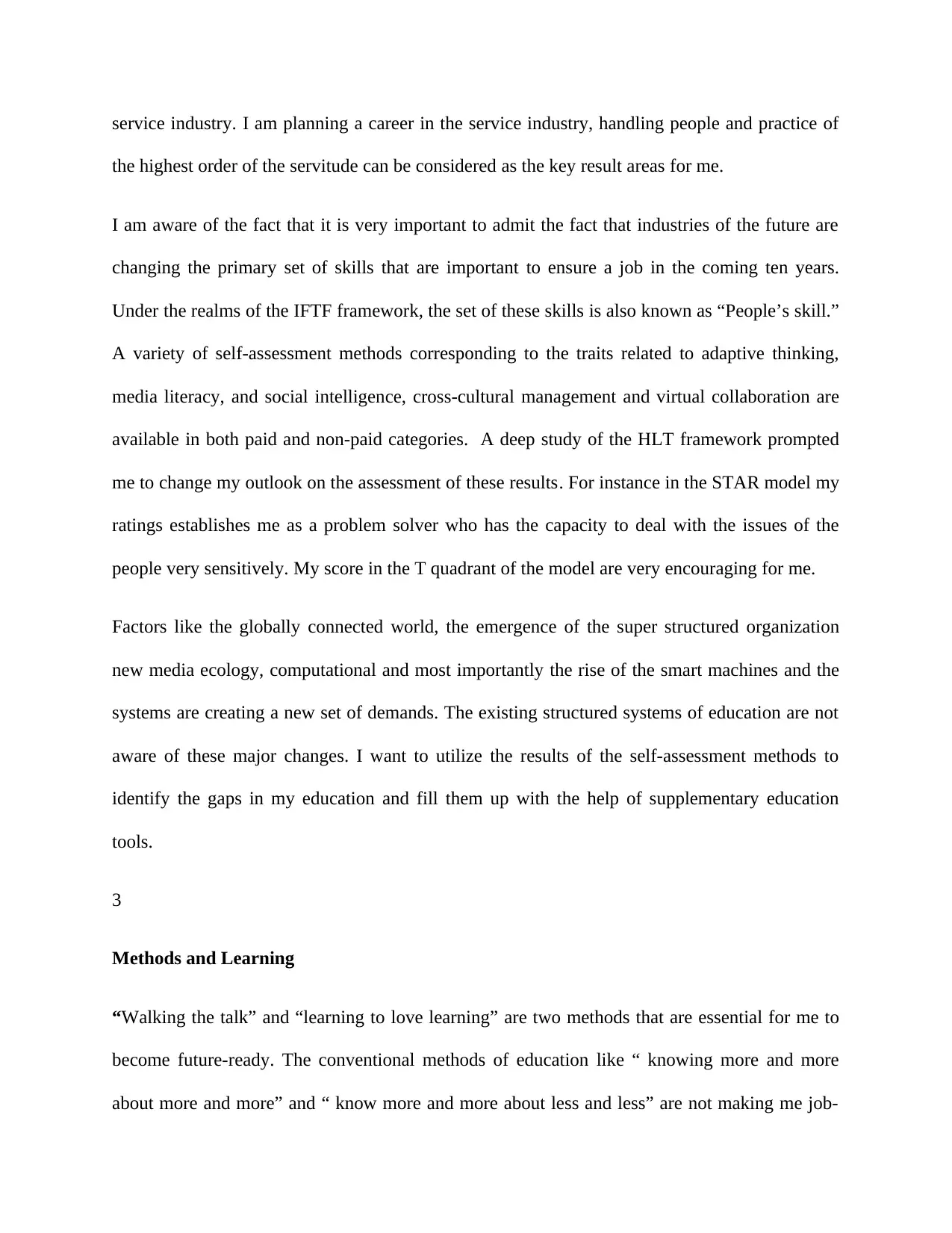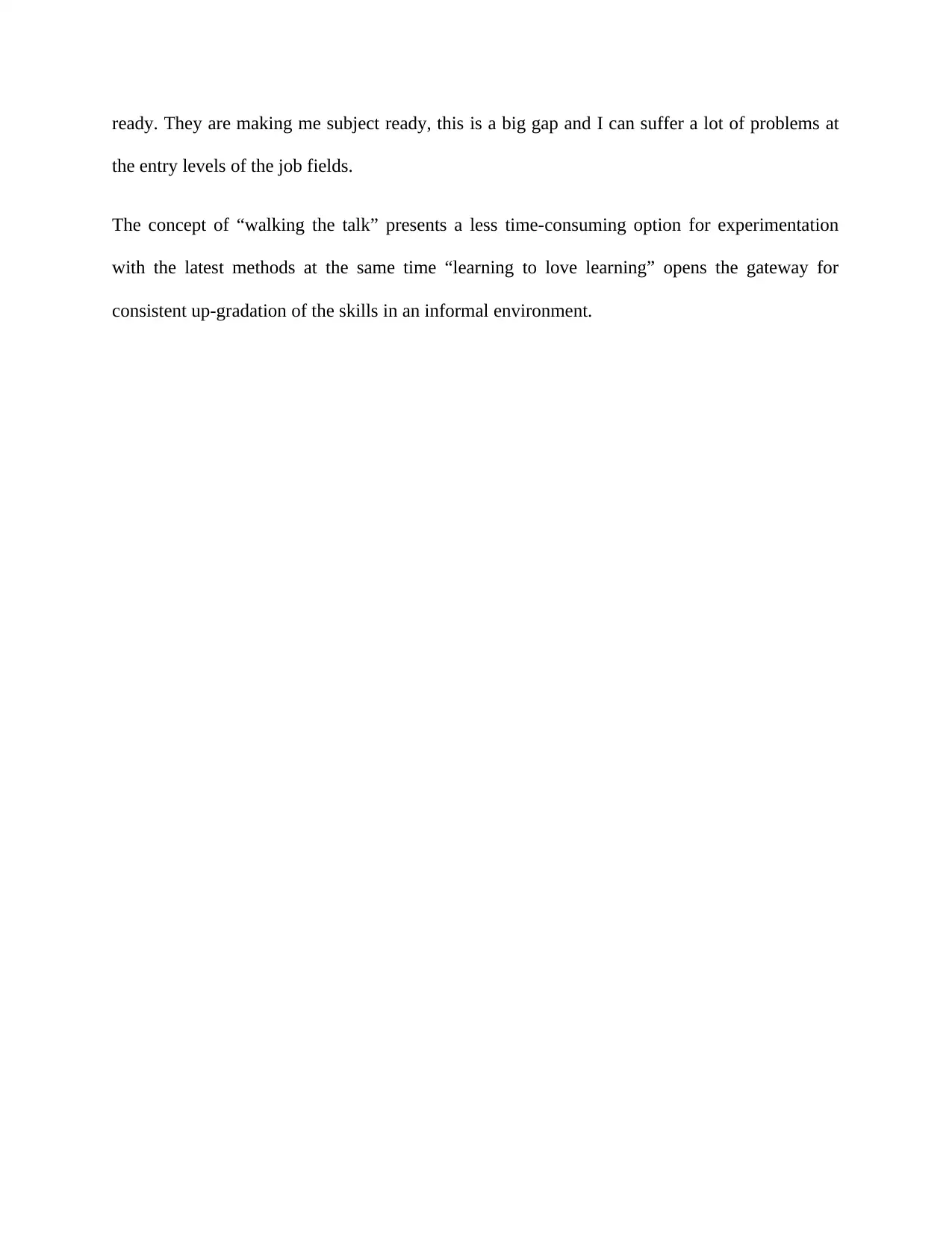Reflection Paper on Self-Assessment for Career Preparedness
VerifiedAdded on 2022/08/24
|5
|701
|27
Report
AI Summary
This report is a reflection on self-assessment for career preparedness, focusing on the application of the Happenstance Learning Theory (HLT) and its relevance to future work skills. The author explores the concept of "learning to love learning" as a key element in adapting to the evolving demands of the job market. The report discusses the importance of skills like analytical abilities, emotional quotient, and tacit knowledge in the service industry, aligning with the IFTF framework's "People's skill." It examines the use of self-assessment methods, like the STAR model, to identify strengths and weaknesses, and the need to bridge gaps in education through supplementary tools. Furthermore, the report emphasizes the effectiveness of practical methods like "walking the talk" and lifelong learning to become future-ready, contrasting them with traditional educational approaches that may not fully prepare individuals for the contemporary job market. The author intends to use the self-assessment to identify and address gaps in their education, preparing for the demands of the future job market.
1 out of 5











![[object Object]](/_next/static/media/star-bottom.7253800d.svg)